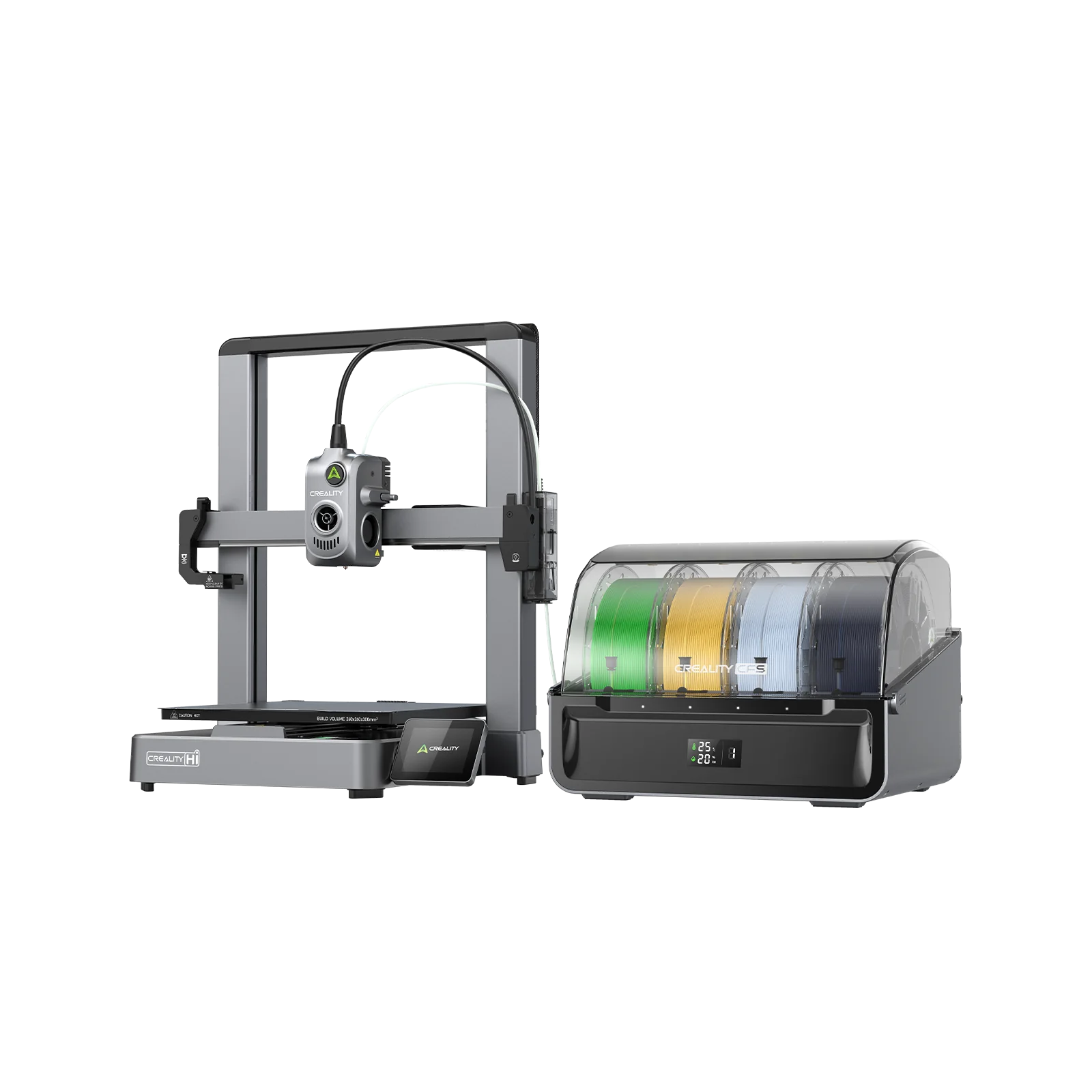Compare KP3S PRO V2 vs Hi Combo
Comparison between the best 3D printers
Choose the best 3D printer at the best price. The cheapest 3D printers are here.
Buy a 3D printer here with 3D Fila.
 |
 |
|
| Model | KP3S PRO V2 |
Hi Combo |
| Printing Material | Filament | Filament |
| Buy Filament for Kingroon KP3S PRO V2 | Buy Filament forCreality Hi Combo | |
| Estimated price | $229,00 | $469,00 |
| Manufacturer | Kingroon | Creality |
| Release Year | 2024 | 2025 |
| Print Volume [mm] | 220x220x250 | 260x260x300 |
| Printer Size [mm] | 420x400x450 | 409x392x477 |
| Weight [kg] | 12,6 | 19,14 |
| Power Loss Recovery | NO | YES |
| Enclosed printer | NO | NO |
| Bed Leveling | Automatic | Automatic |
| Filament End Sensor | NO | YES |
| Bed type | Heated | Heated |
| Power supply system | Direct Drive | Direct Drive |
| Standard nozzle | 0,4 | 0,4 |
| Maximum Nozzle Temperature [°C] | 260 | 300 |
| Maximum Bed Temperature [°C] | 100 | 100 |
| Maximum printing speed [mm/s] | 350 | 500 |
| Filament holder | YES | YES |
| Camera for supervision | NO | NO |
| Recommended filaments | PLA, PETG, TPU | Hyper-PLA/PLA/PETG/ABS/PLA-CF |
| Recommended slicers | Cura, Orca Slicer | Creality Print 5.1 |
| Maximum Resolution [mm] | 0,01 | 0,1 |
| Processor | ||
| Display | LCD Mono | Touchscreen 3,2'' |
| Power Supply | 300 W | 390 W |
| Connectivity | USB-C / MicroSD / Ethernet | SD Wifi Creality Cloud |
| Operating systems | Windows, Mac, Linux | Windows, Linux e Macbook |
| Date of registration in the system | 2025-03-18 | 2025-01-27 |
| Release date | 2024 | 2025 |
| Extra features | The Kingroon KP3S Pro V2 is a high-speed FDM 3D printer with Klipper firmware, ensuring fast and precise prints. It features linear rails on all axes, a Direct Drive extruder with a 9.5:1 gear ratio, and an efficient ceramic heater. It includes an inductive sensor for automatic bed leveling, a PEI magnetic bed, a built-in accelerometer for vibration calibration, and Wi-Fi, Ethernet, and USB connectivity for remote control. | The Creality Hi Combo is an advanced 3D printer featuring the CFS system for up to 16 colors and intelligent filament management. It boasts a robust metal frame, speeds up to 500 mm/s, precise auto-leveling, an integrated extruder design, easy-to-swap tri-metal nozzle, and active vibration sensing for smooth prints. Its 95% pre-assembled, with a foldable touchscreen, built-in camera with privacy protection, and Creality OS support for a seamless and powerful experience. |
| Support for multiple colors and materials (AMS and CFS) | NO | YES |
Notes * |
||
| Cost-benefit | 7 / 10 | 8 / 10 |
| Hardware | 0.9 / 10 | 6 / 10 |
| Tela | . | . |
| Print volume | 3 / 10 | 4 / 10 |
| Performance | 3 / 10 | 4 / 10 |
Conclusion |
| In comparing the KP3S PRO V2 and the Hi Combo 3D printers, there are several key factors to consider that inform the decision-making process for potential buyers. The KP3S PRO V2, offered at a lower estimated price, provides a solid entry point for hobbyists and those seeking basic functionality. Its compact print volume and high maximum printing speed make it suitable for smaller projects. However, its lack of power loss recovery and filament end sensor limits its convenience and reliability during long printing tasks. Nevertheless, it is equipped with automatic bed leveling and offers multiple connectivity options, which are significant advantages for users looking for ease of use. On the other hand, the Hi Combo comes at a higher price point but includes a range of advanced features that can justify the investment for more serious users. It supports intelligent filament management for multi-color printing and offers a notably larger print volume, making it ideal for complex projects. The advantage of power loss recovery and a filament end sensor enhances its reliability and user-friendliness. Additionally, the inclusion of a touchscreen and Creality OS reflects a more modern design and interface, making operation smoother. While both models feature automatic bed leveling and direct drive systems, the overall performance and feature set of the Hi Combo position it as a more capable printer for users looking to produce high-quality, multi-material prints. Consequently, while the KP3S PRO V2 may appeal to budget-conscious beginners or those with simpler projects, the Hi Combo is likely the better choice for advanced users willing to invest in enhanced capabilities and reliability. Ultimately, the choice between these two models will depend on the user's specific needs, budget, and intended usage, balancing upfront cost against long-term value and performance. |

